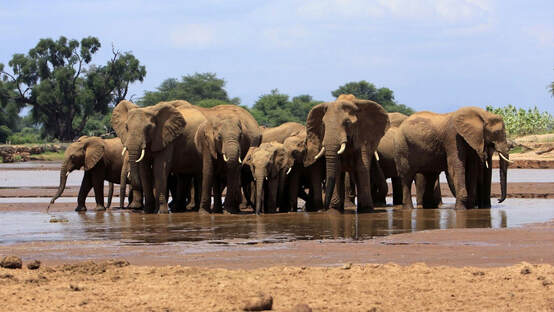Written by John Edward Betancourt
Caution: This article contains spoilers for the Series Premiere of ‘Chasing the Rains’.
One particular bit of knowledge that everyone is aware of in this world, is that water is essential to all life on Earth. For we are all composed of it, we all require it to survive in some form or fashion, and that is why we cherish it and consume it… without giving it a second thought really. For one of the big benefits of our modern world, is that humanity has access to plenty of fresh and clean water. And it is so plentiful and so available to us that we don’t think twice about finding it. In fact, in the modernized world, obtaining it requires minimal effort. Which has in many ways, allowed for us to forget some stunning truths about water. Such as the fact that not every human being on the planet has the same access to it, that those of us in the modernized world do, and sometimes struggle to get what they need. And in the untamed parts of the world, where wildlife rules the day, the relationship that animals share with water can be quite unique and harrowing. For they too understand their need to consume it to live, and that prompts them to live near it and make it a true priority in their lives. To the point where they will go where the water is plentiful and that fascinating reality, motivated BBC America to chronicle what that unique journey looks like through its new series, Chasing the Rains. Which debuted on the network last night and allowed for us to see exactly how this delicate dance with water works for wildlife. Which ‘The Fickle River’ presented to us via three key storylines. One involving an Elephant herd led by Anastasia, a cheetah mother named Kuleta, and a wild dog matriarch named Phoenix. All of whom live in Samburu, Naboisho and Laikipia, respectively… and live by the patterns of the water. Which in this story, was plentiful. For when we meet the creatures of this part of the world (in Africa), we came to learn that the great springtime rains set the tone for how they live for a better part of the year. For this is when water is at its most plentiful and this is when these creatures can have families and raise them in relative peace. Which really didn’t make it seem as though trouble or struggles would be on the horizon, since they had everything, they needed. But, as this episode chugged along, the rains were no longer falling from the sky. There was nothing but heat, slowly baking the water away. Which prompted… concern from these matriarchs. Because they needed that water to live, to help their babies thrive, and their respective cohorts as well… and that prompted them to get creative with their hunts for food and water and move about to ensure survival and well… soon it became apparent that a water crisis was in front of these intrepid animals and these mothers would have to make a powerful call. Either surrender and hope to find a new, local source of water to thrive upon, or move their families post haste by chasing the rains. To ensure they have the very substance they desperately need to survive. Which is... a powerful way to set up a powerful journey. One that shows us how critical water is to the wildlife of the world and how their lives are determined by its plentiful nature or lack thereof. And this story deserves a hearty round of applause for not rushing the journey, and for instead helping us to get to know these fascinating animals and see how they live… before setting the stage for the crisis at hand. For that vests us in their journey and well… that makes this a masterful premiere. One that truly sets the stage for tough times ahead as we venture with these unique animals into the wilds of Africa, to see them fight hard for the water mankind takes for granted. Making this a humbling documentary for certain, one that is going to undoubtedly move us in the weeks ahead as this tough journey, continues along. Until next time.
0 Comments
Leave a Reply. |
Archives
November 2024
|
|
© 2012-2024, Nerds That Geek LLC.
All Rights Reserved. |
uWeb Hosting by FatCow

 RSS Feed
RSS Feed